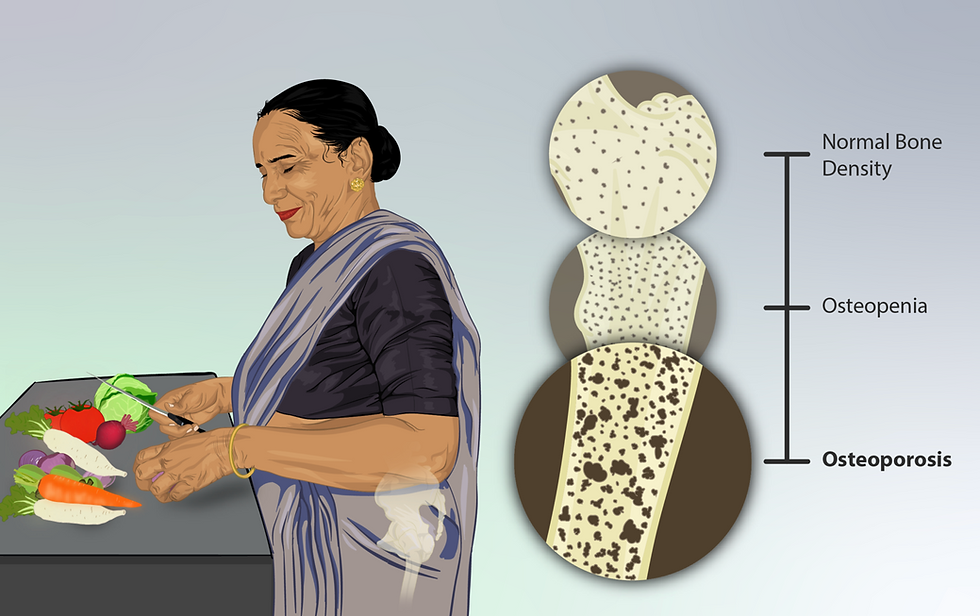Osteoporosis
Osteoporosis is where there's a reduction in bone density, therefore making the bone weaker and more prone to fractures. A pre-condition of this is Osteopenia. It's characterised by the presence of Fragility fractures.
Risk factors:
Elderly
Female
Anorexia (BMI < 19)
Long-term steroids
Menopause (Oestrogen promotes bone formation)
Prolonged immobility, Alcohol, Smoking
RA
FRAX Tool
This is a tool to assess risk of fragility fracture over next 10 yrs. To make the tool more accurate, the bone mineral density should be taken into account, and this can be measured with a DEXA scan.
Bone Mineral Density/BMD
Measured with a DEXA scan. The hip is the best part of the body to do this. This scan gives 2 scores:
Z score - No. of standard deviations of bone density below mean for their age
T score - No. of standard deviations of bone density below mean for a healthy, young adult
The T score is the more important measurement!
T score indications:
-1 to -2.5 - Osteopenia
< -2.5 - Osteoporosis
N.B. Bone profile will be normal in these patients.
Management
Lifestyle:
Reduce risk factors - e.g. smoking cessation, reduce alcohol, better diabetic control
Diet - adequate vit D, calcium, protein
Exercise
Medical:
Bisphosphonates e.g. Alendronate, Zoledronic acid
This works by reducing osteoclast activity, therefore preventing bone reabsorption
Side-effects - Reflux, Oesophageal ulcers, Jaw osteonecrosis
Calcium and Vit D supplements may be given to those that are deficient
2nd line medical options include;
HRT in menopausal women
Denosumab - matures osteoclasts
Raloxifene - has oestrogenic effects
Teriparatide (a parathyroid hormone) - stimulates bone growth

